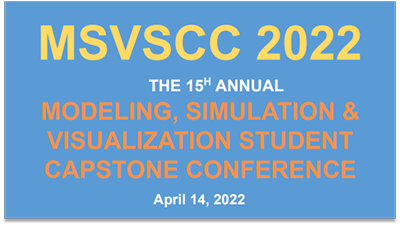Publication Date
2022
Conference Title
Modeling, Simulation and Visualization Student Capstone Conference 2022
Conference Track
Virtual Environments
Document Type
Paper
Abstract
A real-time external labeling algorithm has been developed to explore the potential for applying annotation and visualization to virtual reality environments, which manages label placement in the projections of virtual 3D models on the view plane. The approach intends to place labels with visual constraints, such as no overlapping, intersections, and occlusions, close proximity to the model parts, by adjusting external annotations' positions concerning available space in the view plane. This algorithm is based on the projected model's contour and adapts to camera viewpoint changes within interactive frame rates. It solves the visibility problem of annotations and operates in real-time when the model is rotated. The results show that the proposed method can improve user understanding of complicated 3D models and can be applied to interactive virtual environments.
Keywords:
External labeling, Annotative visualization, View management
Start Date
4-14-2022
End Date
4-14-2022
Recommended Citation
Liu, Shan and Shen, Yuzhong, "Real-Time External Labeling for Interactive Visualization in Virtual Environments" (2022). Modeling, Simulation and Visualization Student Capstone Conference. 2. DOI: 10.25776/bj97-b949 https://digitalcommons.odu.edu/msvcapstone/2022/virtualenvironments/2
DOI
10.25776/bj97-b949
Included in
Real-Time External Labeling for Interactive Visualization in Virtual Environments
A real-time external labeling algorithm has been developed to explore the potential for applying annotation and visualization to virtual reality environments, which manages label placement in the projections of virtual 3D models on the view plane. The approach intends to place labels with visual constraints, such as no overlapping, intersections, and occlusions, close proximity to the model parts, by adjusting external annotations' positions concerning available space in the view plane. This algorithm is based on the projected model's contour and adapts to camera viewpoint changes within interactive frame rates. It solves the visibility problem of annotations and operates in real-time when the model is rotated. The results show that the proposed method can improve user understanding of complicated 3D models and can be applied to interactive virtual environments.


